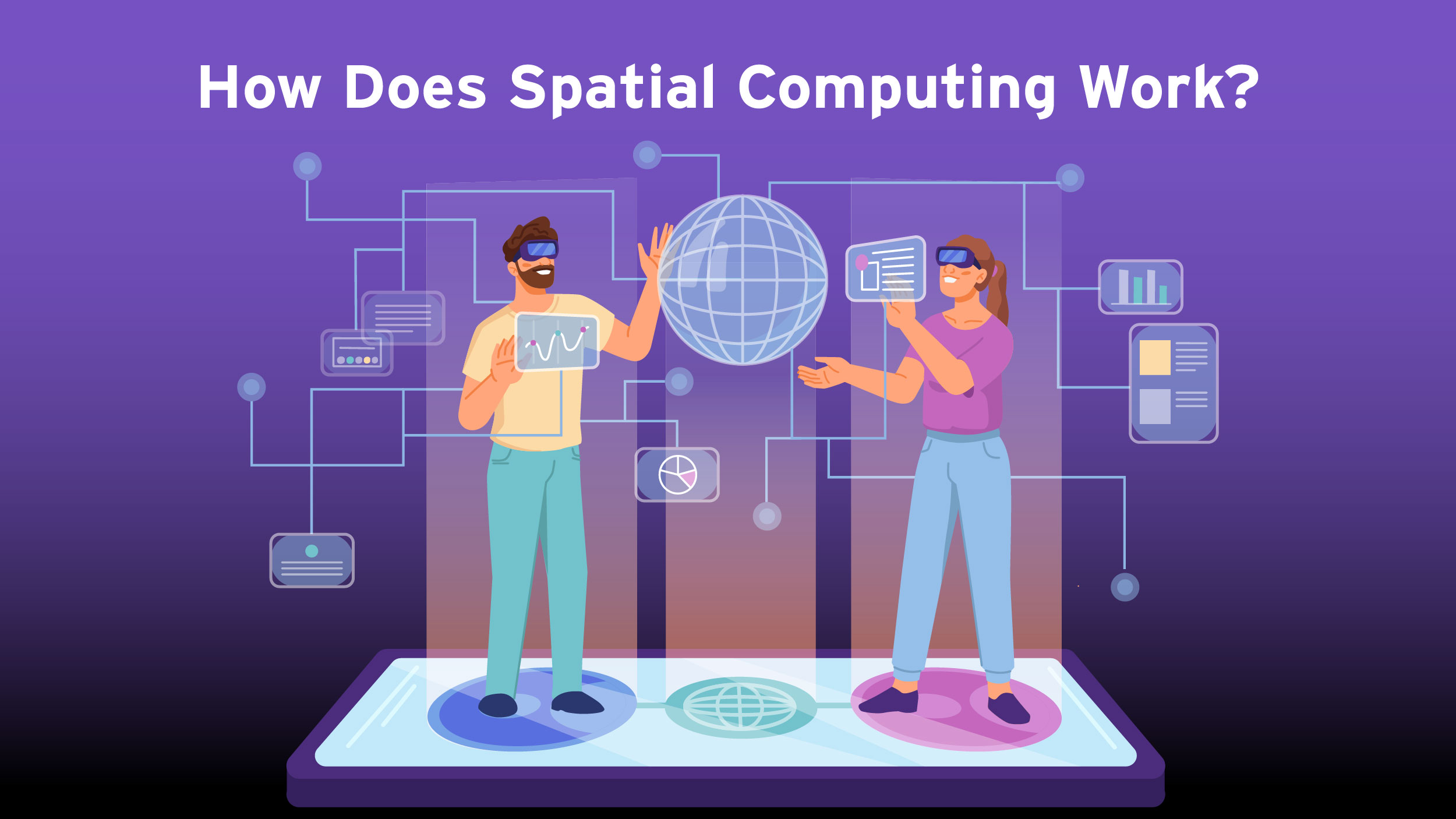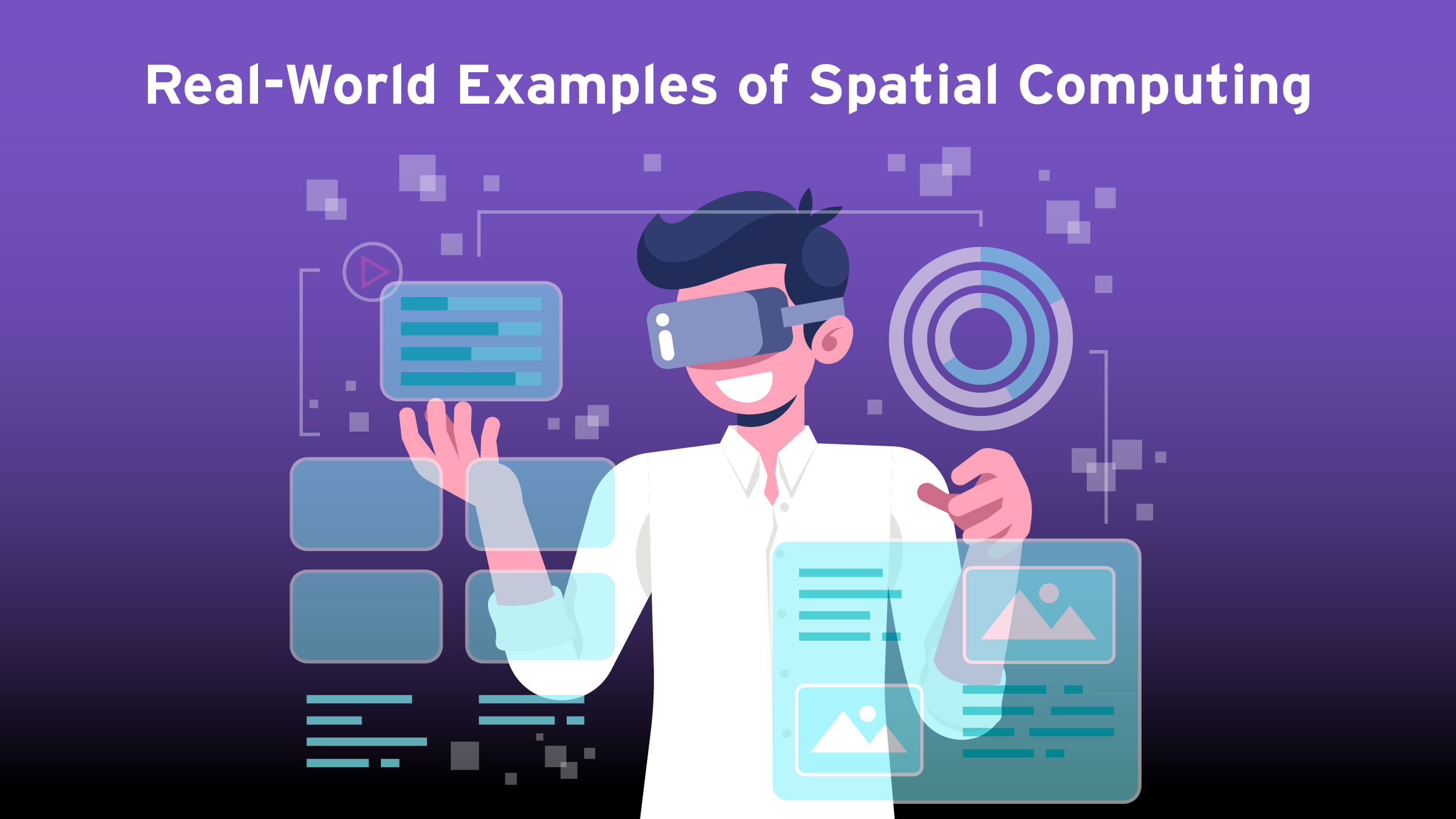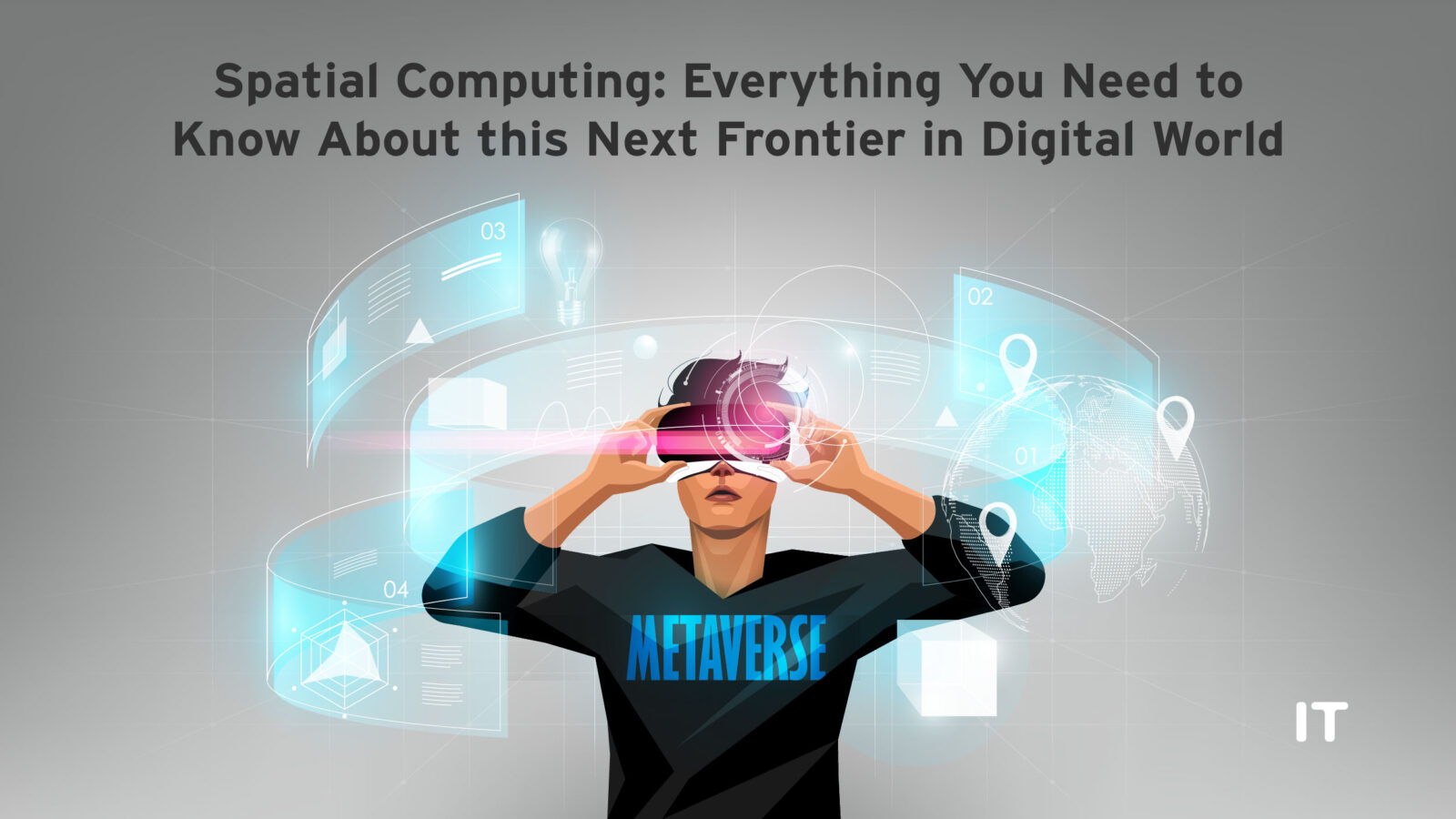So, what’s the deal with spatial computing, and why is everyone in business buzzing about it?
It might sound fancy, but spatial tech is actually everywhere in our daily lives. We’re talking virtual home assistants, GPS, QR codes, and those cool VR/AR apps – all powered by spatial computing.
However, not many people really get what the concept is all about. Simon Greenwold from MIT came up with the term in 2003, and it’s only now starting to catch on, especially after Apple spilled the beans at WWDC 2023.
Apple, the tech giant, is set to shake up the extended reality scene with a cool MR headset and the world’s first spatial computing operating system.
Now, how’s it going to rock the business world? Let’s find out!
What is Spatial Computing?
Spatial computing refers to the methods and tools utilized for acquiring, analyzing, and interacting with 3D data. To facilitate and improve a range of experiences and applications, it entails the digitalization of activities involving people, machines, objects, and the settings in which they occur. IoT, digital twins, ambient computing, augmented reality, virtual reality, artificial intelligence, and physical controllers are examples of components that can be a part of spatial computing. When Simon Greenwold first used the term in 2003, he defined it as “human interaction with a machine that manipulates and retains referents to real objects and spaces”.
How Does Spatial Computing Work?
 Devices that use spatial computing map the user’s immediate surroundings using data gathered by cameras and other sensors. While a smartphone may just use its front-facing camera or a combination of a camera and LiDAR for spatial mapping, a headset such as the Apple Vision Pro uses 12 cameras, five sensors, and a specialized chip to generate its mixed reality effect.
Devices that use spatial computing map the user’s immediate surroundings using data gathered by cameras and other sensors. While a smartphone may just use its front-facing camera or a combination of a camera and LiDAR for spatial mapping, a headset such as the Apple Vision Pro uses 12 cameras, five sensors, and a specialized chip to generate its mixed reality effect.
The shape of the things surrounding the user is then often determined by feeding that data into one or more algorithms. More sophisticated gadgets might also categorize the items in their area of vision using image recognition.
A virtual animal sprinting down your hallway or a sneak peek of a new couch in your living room are examples of virtual items that can be superimposed by the device once it has a spatial map and a grasp of the objects within a place.
Spatial computing platforms enable real-time interactions, allowing users to engage with digital content in a natural and intuitive manner.
Also Read: How Does Cloud Infrastructure as a Service Benefit Businesses?
Real-World Examples of Spatial Computing
 Spatial computing is poised to revolutionize our lives in the future, but its impact is already evident in our current way of life.
Spatial computing is poised to revolutionize our lives in the future, but its impact is already evident in our current way of life.
The method has become an integral part of our lives, whether we’re applying filters or location tags on social media, utilizing GPS systems, or engaging with intelligent assistants. These spatial technologies not only have a significant impact on our daily routines but also greatly influence the business landscape.
This process is often associated with Virtual Reality (VR) and Augmented Reality (AR), as these technologies enable us to delve into the realm of “extended reality”. In this space, digital content can be interacted with in a non-digital format, providing developers with endless possibilities.
Augmented reality enables the integration of digital elements into our physical environment. For example, in the industrial sector, one can utilize AR applications or smart eyewear to display information regarding the internal components of a machine on its external surface.
Boeing employed rudimentary augmented reality (AR) technology to facilitate engineers in identifying the optimal placements for wiring within aircraft. This innovative integration of AR into their workflow led to a significant 30% enhancement in the efficiency of wiring installation processes.
Virtual Reality (VR) enables us to immerse ourselves in digital realms and engage with three-dimensional content within those virtual environments. This opens doors for remarkable collaboration and provides valuable training prospects. Research shows that individuals who learn in virtual reality settings perform 20% more efficiently and achieve a success rate that is 230% higher compared to their counterparts.
Final Thoughts
Spatial computing has already made its presence known and is making a significant impact across various industries. Numerous instances of the method can be found, such as manufacturing companies like Ford harnessing spatial technologies to enhance vehicle safety, as well as tech giants like Meta delving into the exploration of the metaverse.
The future of this field is poised to see substantial expansion, driven by the integration of innovative technologies. The advent of 5G and advancements in edge computing enables the creation of more sophisticated extended reality (XR) experiences with minimal delay and lag.
Ongoing advancements are pushing the boundaries of what headsets and wearable devices can accomplish. Leading spatial computing companies are introducing groundbreaking platforms and cutting-edge spatial computing glasses. Looking ahead, we can expect digital experiences to seamlessly integrate into everyday life, alongside smart tools that empower individuals to tap into their full capabilities.
































